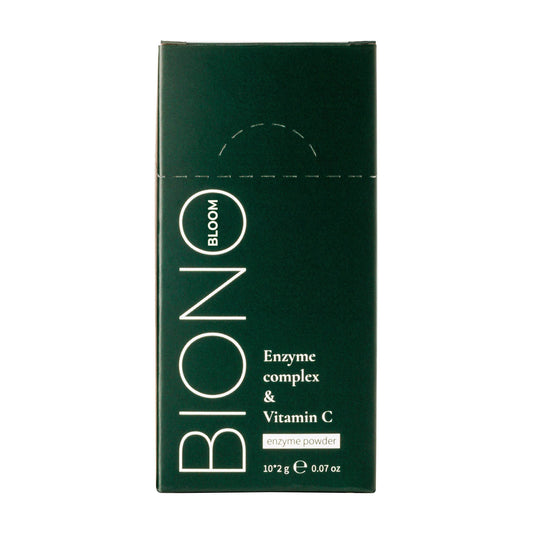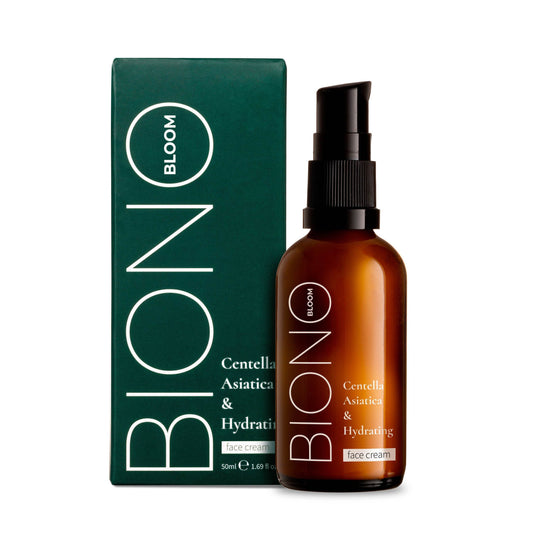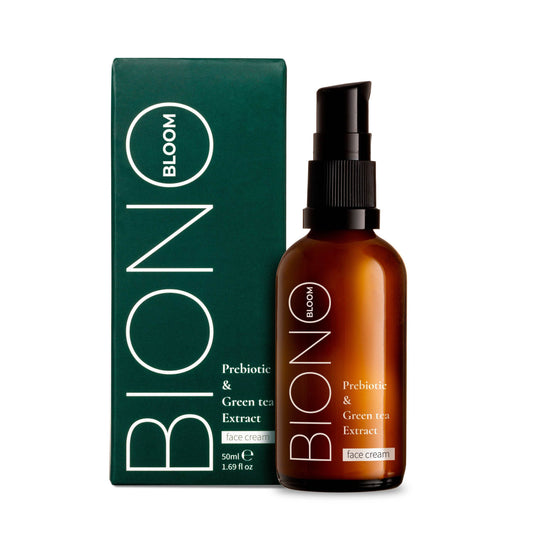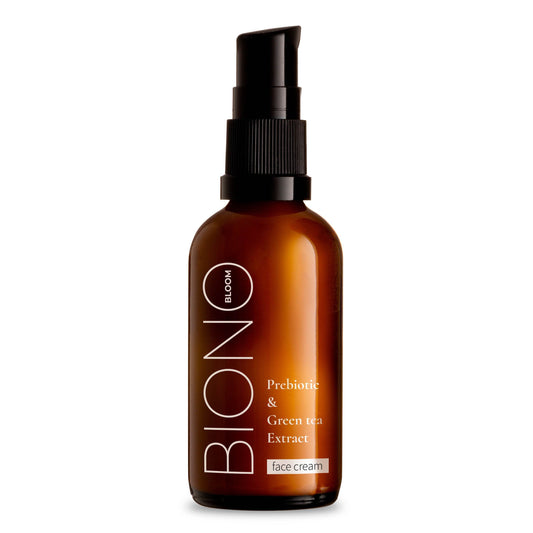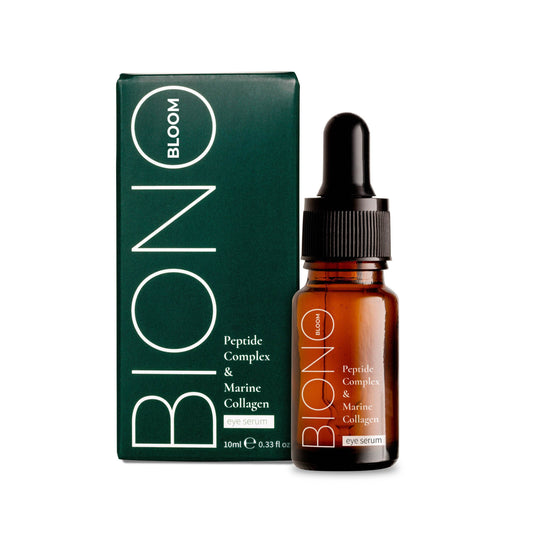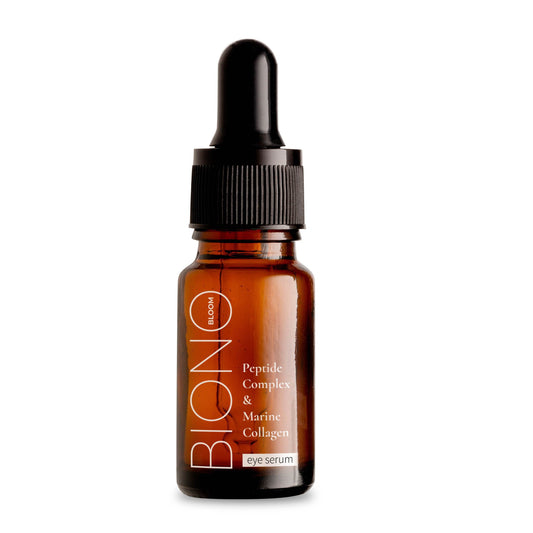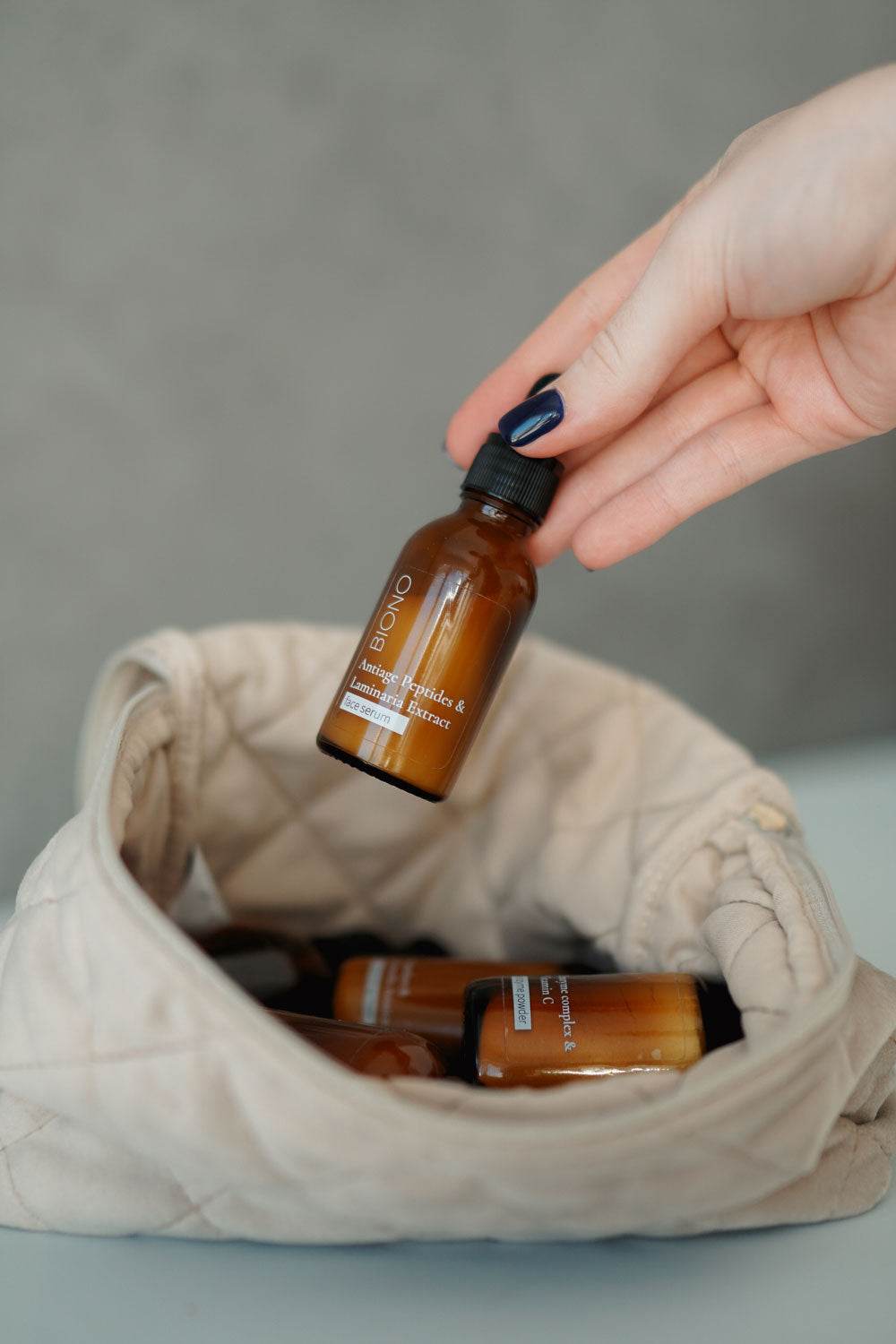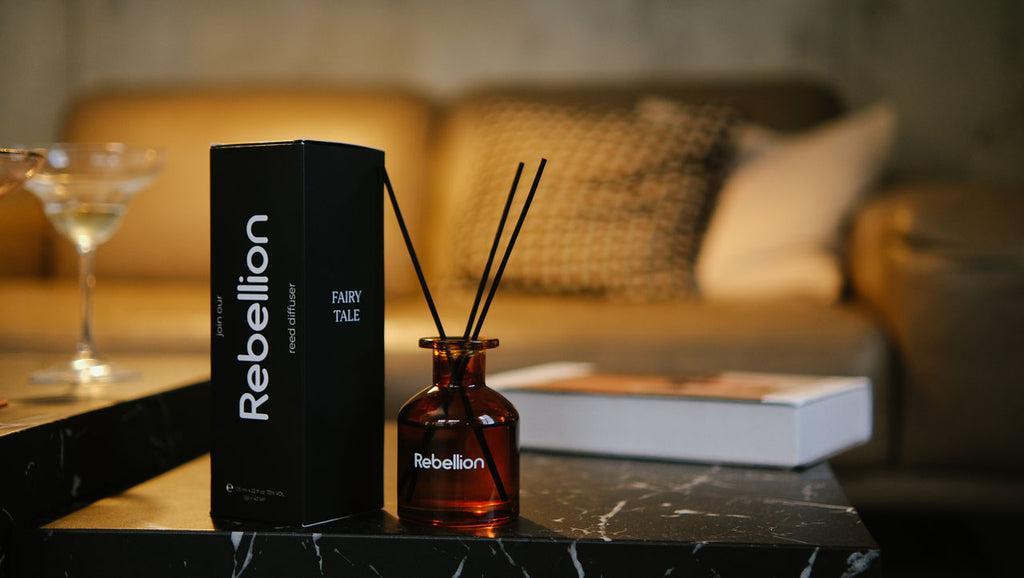
How to use salicylic acid – beginners and advanced users
Share
Salicylic acid is one of the most effective ingredients in the fight against skin imperfections, blackheads, and excessive sebum production. However, its power requires proper knowledge – if used incorrectly, it can irritate the skin instead of helping. Many people make basic mistakes when applying this ingredient, failing to achieve the desired results or even worsening their skin condition. In this guide, you'll learn everything about the proper use of salicylic acid, from choosing the right concentration to combining it with other active ingredients.
What is salicylic acid and why is it worth using?
Salicylic acid (BHA – beta hydroxy acid) is a lipophilic active ingredient that, thanks to its chemical structure, can penetrate deep into skin pores, dissolving sebum and dead skin cells. Unlike AHAs, which act on the skin's surface, BHA has the ability to work within the pores, making it indispensable for oily, acne-prone, and blackhead-prone skin. Its anti-inflammatory and antibacterial properties effectively reduce inflammation and prevent new breakouts.
The natural origin of salicylic acid from willow bark has been known since ancient times, but it was only modern dermatology that unleashed its full potential in skin care. Today, it is considered the gold standard in the treatment of acne vulgaris and forms the basis of many dermatological therapies. Clinical studies confirm its effectiveness in reducing acne lesions by 40-60% after 8-12 weeks of regular use. Furthermore, salicylic acid also has keratolytic properties, meaning it helps exfoliate dead skin cells and prevent hyperkeratosis.
Key benefits of using salicylic acid:
- Deeply cleanses pores and dissolves blackheads from the inside
- Reduces inflammation and bacteria responsible for acne
- Regulates excessive sebum production and mattifies the skin
- Smoothes skin texture and improves skin tone
- Reduces the visibility of pores and prevents them from clogging
- It has a keratolytic effect, removing dead skin without mechanical friction.
Understanding the mechanism of action of salicylic acid is crucial for its proper use. The BHA molecule dissolves the "cement" that binds dead skin cells while simultaneously penetrating into sebum-filled pores. There, it loosens the blockages that lead to the formation of blackheads and pimples. It also normalizes the keratinization process, preventing the formation of new blackheads. It is this multifaceted activity that makes how to properly use salicylic acid a fundamental question for anyone struggling with problematic skin.

How to use salicylic acid – basic rules for beginners
Introducing salicylic acid into your skincare routine requires a well-thought-out strategy and gradual application. The most important rule is to start with a low concentration – products containing 0.5-1% BHA are ideal for a start, allowing the skin to acclimate to the active ingredient. The first application should be to a small area of skin to test for reaction and rule out hypersensitivity. Dermatologists recommend using salicylic acid initially 2-3 times a week, preferably in the evening, when the skin has time to regenerate overnight.
Preparing the skin for application – step by step:
- Cleanse your face thoroughly with a gentle gel or foam suitable for your skin type.
- Pat the skin dry with a towel – the acid works most effectively on a clean, dry surface.
- Wait 2-3 minutes after drying to avoid the skin getting too hot.
- Apply the salicylic acid product in an even, thin layer
- Wait 10-15 minutes before applying further care products.
- Do not wipe the product with a cotton pad or rinse it off – it should remain on the skin
Salicylic acid lowers the skin's pH, so it shouldn't be removed—the product should remain on the skin and work overnight. Many people mistakenly consider BHA toners to be just regular face toners for wiping with a cotton pad, which drastically reduces the ingredient's effectiveness.
Consistency and patience are the keys to success with salicylic acid therapy. Initial results can be seen after 2-3 weeks of regular use, but full results are achieved after 2-3 months of daily use. Many people make the mistake of giving up after a week, not seeing immediate results. Remember that in the initial phase, purging may occur—an acceleration of blackheads to the surface, which is a natural cleansing process. This doesn't mean your skin is in a worse state, but rather evidence that the acid is working in the deeper layers of the skin. However, if purging lasts longer than 4-6 weeks, it's worth consulting a dermatologist.
Choosing the right concentration and form of the product
The cosmetics market offers salicylic acid in various concentrations and application forms, allowing you to tailor the product to your individual skin needs. Over-the-counter (OTC) products typically contain 0.5-2% BHA, while dermatological preparations can reach concentrations as high as 20-30% but require specialist supervision.
Salicylic Acid Concentration Guide:
- 0.5% BHA – ideal for sensitive skin and as a gentle introduction, minimal risk of irritation
- 1% BHA – universal concentration for most skin types, good for everyday use
- 2% BHA – the most popular concentration, effective for regular acne problems
- 3-5% BHA – strong action for spot use or intensive therapy
- Above 5% BHA – only under the supervision of a dermatologist, usually in the form of professional peels
The most popular forms of salicylic acid products:
- Tonics and essences – light, water-based formulas ideal for daily use on the entire face, absorb quickly and prepare the skin for further care steps
- Serums and ampoules – concentrated preparations with a higher concentration of BHA, intended for targeted action on problematic areas or the entire face in case of advanced problems
- Spot creams and gels – thick formulas for topical application to individual blemishes or particularly problematic areas
- Masks and peels – intensive preparations used 1-2 times a week for a deeper exfoliation and cleansing effect
The product's formula should be chosen not only to suit the user's needs but also their preferences and overall skincare routine. People with oily skin prefer lightweight toners and serums that don't burden the skin with additional sebum. Dry, acne-prone skin tolerates salicylic acid better when used in a cream that provides additional moisture.
It's also worth paying attention to the product's pH – the optimal range for BHA action is 3-4. Products with a pH that is too high will be less effective, even with higher acid concentrations. Some manufacturers add soothing ingredients like panthenol, allantoin, or niacinamide to their formulas, which increases the product's tolerance for sensitive skin.

Correct order of use in your skincare routine
The placement of salicylic acid in your skincare routine is fundamental to its effectiveness and skin safety. The golden rule of dermocosmetics is to apply products from the lightest to the heaviest textures and from the lowest to the highest pH. Salicylic acid, with its low pH (3-4), should be applied at the beginning of your routine, immediately after cleansing, so it can effectively penetrate the skin.
The correct order for your evening salicylic acid routine:
- Makeup removal – oil or milk to remove makeup and sunscreen
- Cleansing – facial cleansing gel or foam adapted to your skin type
- pH balancing toner (optional) – prepares the skin for better acid absorption
- Salicylic acid – toner, serum or solution with BHA, wait 10-15 minutes
- Moisturizing serum or serum with other active ingredients – hyaluronic acid, niacinamide (after waiting period)
- Moisturizing cream – completes the routine and supports regeneration
- Eye cream – if used, at the very end
Your morning routine may look different – if you use salicylic acid in the evening, you can limit yourself to gentle cleansing, moisturizing, and the mandatory SPF protection. Many people ask whether to use salicylic acid in the morning or at night – the answer depends on your skin type and tolerance. Using it in the evening is safer because it eliminates the risk of photosensitivity, but those with very oily skin can also use it in the morning as long as you use a high SPF of 50+.
Why application order is so important:
- Salicylic acid has a low pH and must be applied directly to the skin for maximum effectiveness.
- Applying it after cream or other occlusive products creates a barrier that blocks penetration
- The waiting period after applying BHA allows it to lower the skin's pH and begin working.
- Products with a higher pH applied too quickly can neutralize the acid's effects.
- Sunscreens are absolutely essential – BHA increases skin sensitivity to UV by 20-40%
There are situations where the order may need to be modified—for example, when using the "sandwich" method for very sensitive skin. This technique involves applying a thin layer of moisturizer before the salicylic acid, slowing its penetration and reducing the risk of irritation while maintaining the treatment's effectiveness. This is a proven strategy for those with reactive skin who want to enjoy the benefits of BHA without the risk of excessive irritation.
Combining salicylic acid with other active ingredients
Combining active ingredients is an art that requires knowledge of their properties, pH, and potential interactions. How to use salicylic acid with other ingredients is one of the most frequently asked questions by those building an advanced skincare routine. The key is understanding which combinations are synergistic and enhance the effects, and which may lead to irritation or neutralize the effects.
Safe and synergistic ingredients with salicylic acid:
- Niacinamide (vitamin B3) – the perfect partner for reducing pores, regulating sebum and brightening discolorations
- Hyaluronic acid – provides hydration after exfoliation, soothes potential irritations
- Ceramides and panthenol – strengthen the protective barrier weakened by acid, calm the skin
- Peptides – can be used in the same routine, but in a separate step after a 15-minute break
- Antioxidants (resveratrol, green tea extract) – protect the skin against free radicals
- Aloe and allantoin – soothe and moisturize, ideal for use after acid
It's also important to remember to introduce new ingredients gradually – don't combine several active substances at once, but add them one at a time, two weeks apart. This will allow you to identify potential sources of irritation and assess the effectiveness of each ingredient individually.
Combinations that require caution or complete avoidance:
- AHA acids (glycolic, lactic, mandelic) – simultaneous use of several acids may lead to excessive irritation; use alternately or at different times of the day
- Retinol and retinoids – a very irritating combination; use on different days or one in the morning (BHA), the other in the evening (retinol) after full adaptation
- Vitamin C (L-ascorbic acid) – a similar low pH may be too aggressive; it is better to use vitamin C in the morning and BHA in the evening
- Benzoyl peroxide – together they can dry out the skin; it is safer to use them at different times of the day or alternately
- Mechanical exfoliators and brushes – avoid on days when using acid, this is double exfoliation
Remember that even safe combinations require an adaptation period. Start by introducing salicylic acid alone, and only after 4-6 weeks, when your skin has adjusted, add additional active ingredients. Monitor your skin's reactions and adjust your routine to its needs – it will tell you if a given combination is right for it.

The most common mistakes when using salicylic acid
Even the best active ingredient won't deliver results if used incorrectly. Analysis of thousands of cases in dermatological practices reveals recurring patterns of errors that not only prevent improvement but can actually worsen skin conditions. Being aware of these pitfalls will help you avoid frustration and maximize the potential of salicylic acid.
The most common beginner mistakes:
- Increasing the frequency too quickly – daily use from the first day leads to irritation and, paradoxically, increased sebum production
- Skipping SPF protection – BHA increases photosensitivity, without a filter you risk discoloration and sunburn
- Application to wet skin – water opens pores and increases penetration, causing burning and redness
- Neglecting hydration – the skin needs regeneration after exfoliation, a moisturizing cream is a must
- Using several acids at the same time is a recipe for damaging the protective barrier and chronic irritation.
- Expecting immediate results – giving up after a week is a common mistake, the effects appear after 2-3 weeks
Increasing the frequency of use too quickly is the most common mistake made by beginners. Enthusiasm and the desire for quick results lead to daily, or even twice-daily, use from day one. This aggressive therapy usually results in severe irritation, redness, flaking, and, paradoxically, increased sebum production as a protective reaction. How to use salicylic acid safely is a gradual process – start 2-3 times a week for the first two weeks, then increase to every other day, and only after a month should you consider daily use.
Skipping sunscreen is a cardinal mistake when using any exfoliating acid. BHA increases skin's photosensitivity, and without adequate SPF 30-50+ protection, you risk discoloration, sunburn, and accelerated aging. Many users mistakenly assume that just because they use an acid in the evening, sunscreen isn't necessary in the morning – this is a myth. The exfoliating effect lasts for several days, so sun protection is essential every day, regardless of the weather or season.
Warning signs that you are doing something wrong:
- Burning sensation lasting longer than 5 minutes after application
- Severe redness and a feeling of warmth at the application sites
- Excessive flaking and dry skin
- More breakouts after 6 weeks (not purging)
- A feeling of tightness and discomfort throughout the day
- Increased sensitivity to touch and other skincare products
If you notice any of these symptoms, take a break for 3-5 days, strengthen the protective barrier with cosmetics with ceramides and panthenol, and then return to the acid with less frequency or lower concentration.
Who is salicylic acid for and when to avoid it?
Salicylic acid is an ingredient with a wide range of applications, but like any active ingredient, it's not universally applicable. Understanding the indications and contraindications will help you determine whether BHA is the right choice for your skin and health situation. Individualizing your treatment is key to success – the same concentration and frequency may produce excellent results for one person but cause adverse reactions in another.
Ideal candidates for salicylic acid therapy:
- People with oily and combination skin with excessive sebum production
- Skin with enlarged pores, especially in the T-zone
- Presence of black and white comedones (comedones)
- Mild and moderate acne vulgaris
- Keratosis pilaris (crow skin) on the arms and thighs
- Hyperkeratosis and excessive keratosis of the epidermis
- Uneven skin texture and acne discoloration
If your skin is shiny just hours after washing, you're prone to blackheads, and your pores are visible, especially in the T-zone, salicylic acid will be your savior. It's also excellent for treating rosacea with an inflammatory component (but not telangiectasia) and mild psoriasis when combined with other therapies.
Sensitive and reactive skin requires special caution – this isn't an absolute contraindication, but it's necessary to start with the lowest concentration (0.5%) and extend the intervals between applications. People with eczema, acute atopic dermatitis, or severe redness should consult a dermatologist before incorporating salicylic acid into their skincare routine.
Absolute and relative contraindications:
- Aspirin allergy – salicylic acid may cause a cross-reaction, absolutely avoid
- Pregnancy and breastfeeding – concentrations up to 2% locally are considered safe, but higher concentrations and peeling should be postponed
- Active skin infection – herpes flare-up, impetigo or mycosis require treatment first
- Eczema and atopic dermatitis in the acute phase – it can additionally irritate very sensitive skin
- Very dry and dehydrated skin – requires first rebuilding of the protective barrier
- Taking isotretinoin – the skin is already very sensitive, additional acids can be harmful
Pregnant and breastfeeding women are a special group – using salicylic acid at concentrations up to 2% topically on the face is considered safe by most dermatologists, but leave-on forms with higher concentrations and chemical peels should be avoided. Always consult your doctor before introducing new active ingredients.
Monitoring the effects and modifying the therapy
The effectiveness of salicylic acid therapy requires systematic monitoring of skin changes and flexible adjustments to the skin's needs. There's no one-size-fits-all regimen—what works well for the first few months may require modification as skin condition improves or environmental conditions change. Keeping a skincare journal, where you note frequency of use, skin reactions, and visible results, can be invaluable in optimizing your treatment.
Timeline of typical BHA therapy effects:
- Week 1-2 – the skin becomes smoother to the touch and reflects light better thanks to the exfoliation of dead skin cells
- Week 3-4 – Purging may occur, but new breakouts begin to diminish
- Week 5-6 – purging reduced, visible reduction in the number of new breakouts
- Week 6-8 – visible reduction in pore size and reduced skin shine
- Week 10-12 – maximum improvement in acne reduction and skin tone evening
- After 12 weeks – transition to maintenance therapy with less frequency
If you don't see any improvement after 12 weeks, it's worth consulting a dermatologist—your acne may require systemic therapy or other active ingredients. Sometimes, the problem lies not with salicylic acid, but with other factors like diet, hormones, or stress.
You need to adjust your application frequency to seasonal changes and skin reactions. In winter, when the air is drier and skin is more susceptible to dehydration, you may need to reduce the frequency of BHA application and increase hydration. In summer, when sebum production increases, more frequent use may be beneficial.
When and how to modify therapy:
- At the first signs of irritation, take a 3-5 day break and return to use less frequently.
- Once improvement is achieved, reduce the frequency to 3-4 times a week as maintenance therapy.
- In winter – consider reducing to 2-3 times a week and increasing hydration
- In summer – you can increase the frequency due to increased sebum production
- When changing other products – keep the BHA frequency constant to assess the impact of new cosmetics
- After 6 months – consider taking a periodic break (2-3 weeks) to assess whether your skin still needs intensive therapy
Long-term use of salicylic acid often means using it not daily, but 3-4 times a week as a maintenance therapy after improvement. This allows you to maintain the benefits while reducing the risk of long-term side effects.
How to use salicylic acid. Summary.
Salicylic acid is one of the most versatile and effective ingredients in the fight against problematic skin, but its effectiveness depends entirely on proper use. The key to success is gradual introduction, patience in waiting for results, and flexibility in adapting the therapy to individual skin needs. Remember three fundamental rules: start with a low concentration and use sparingly, always use SPF 30-50+ sun protection, and moisturize after each application. These simple rules will prevent common mistakes and allow you to enjoy all the benefits of this powerful ingredient.
Understanding the difference between purging and actual skin deterioration, skillfully combining BHAs with other active ingredients, and consciously monitoring skin reactions are skills that develop with time and experience. Don't be discouraged by initial difficulties—most users need 2-3 months to find the optimal application regimen for their skin. If you have any concerns or your skin reacts unusually, don't hesitate to consult a dermatologist. Professional help can save you months of trial and error, especially if your acne is hormonal or requires systemic therapy beyond topical care.


